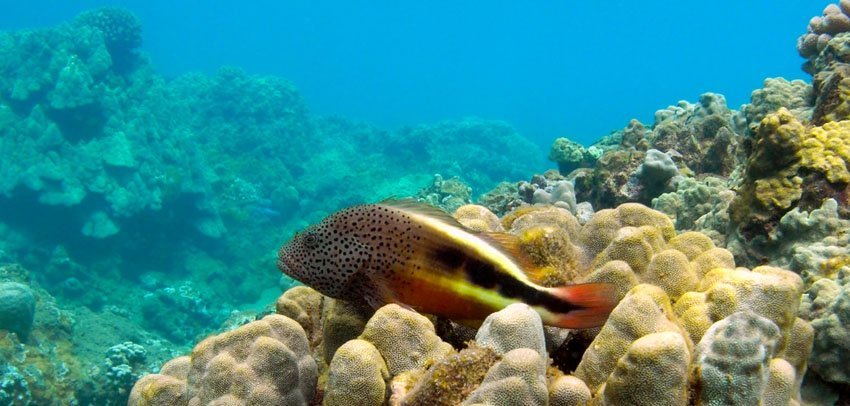Hawkfishes

Hawkfishes (Cirrhitidae) Overview
Hawkfishes can usually be seen waiting motionless on an outcrop or coral head waiting for prey. As soon as a smaller fish or crustacean is seen, they strike quickly. They live in groups of usually one male and one or more females.
Most species are able to change sex, males being sex-reversed females. If the male in a group dies, the dominant female of the group changes sex and takes on its new role as male group leader.
There are six species of hawkfishes in Hawaii. Their Hawaiian name is piliko'a, meaning “coral clinging.”
Frequently Asked Questions
Where can I spot hawkfishes in Hawaii?
Hawkfishes are often seen resting motionless on coral heads or rocky outcrops. Their behavior makes them easy to spot for snorkelers and divers observing reefs.
How do hawkfishes catch their prey?
Hawkfishes are ambush predators. They wait still on coral and lunge quickly to capture passing small fish or crustaceans with a sudden strike.
Can hawkfishes change sex?
Yes. Most hawkfish species are protogynous hermaphrodites, meaning females can turn into males. If the dominant male dies, the top female will change sex to take his place in the group hierarchy.
What is the Hawaiian name for hawkfish?
The Hawaiian name for hawkfishes is piliko'a, which means “coral clinging,” a reference to their typical motionless posture atop reef structures.
How many hawkfish species live in Hawaii?
There are six species of hawkfishes found in Hawaiian waters, each adapted to life among the reefs with slightly different coloring and size.








